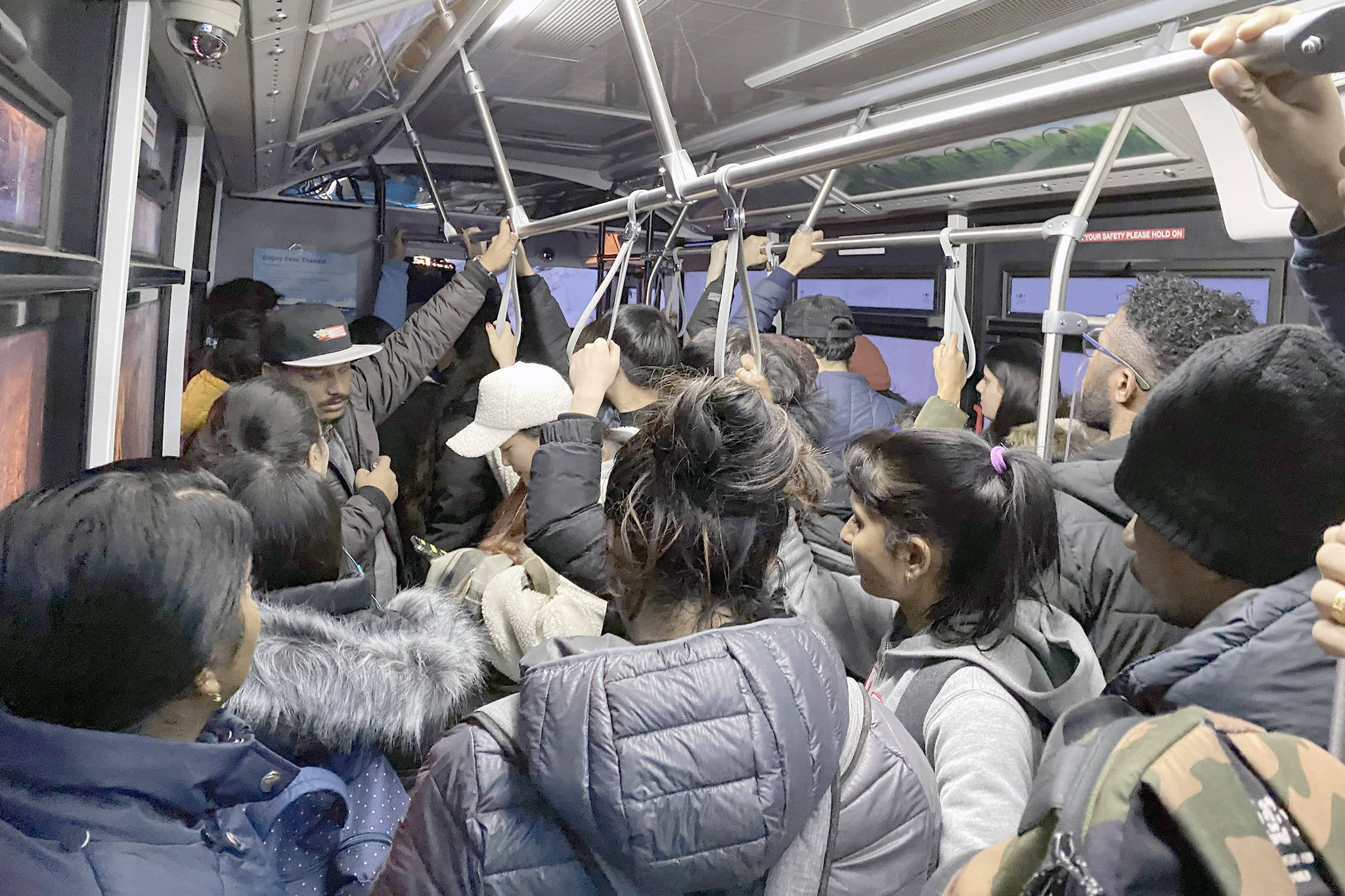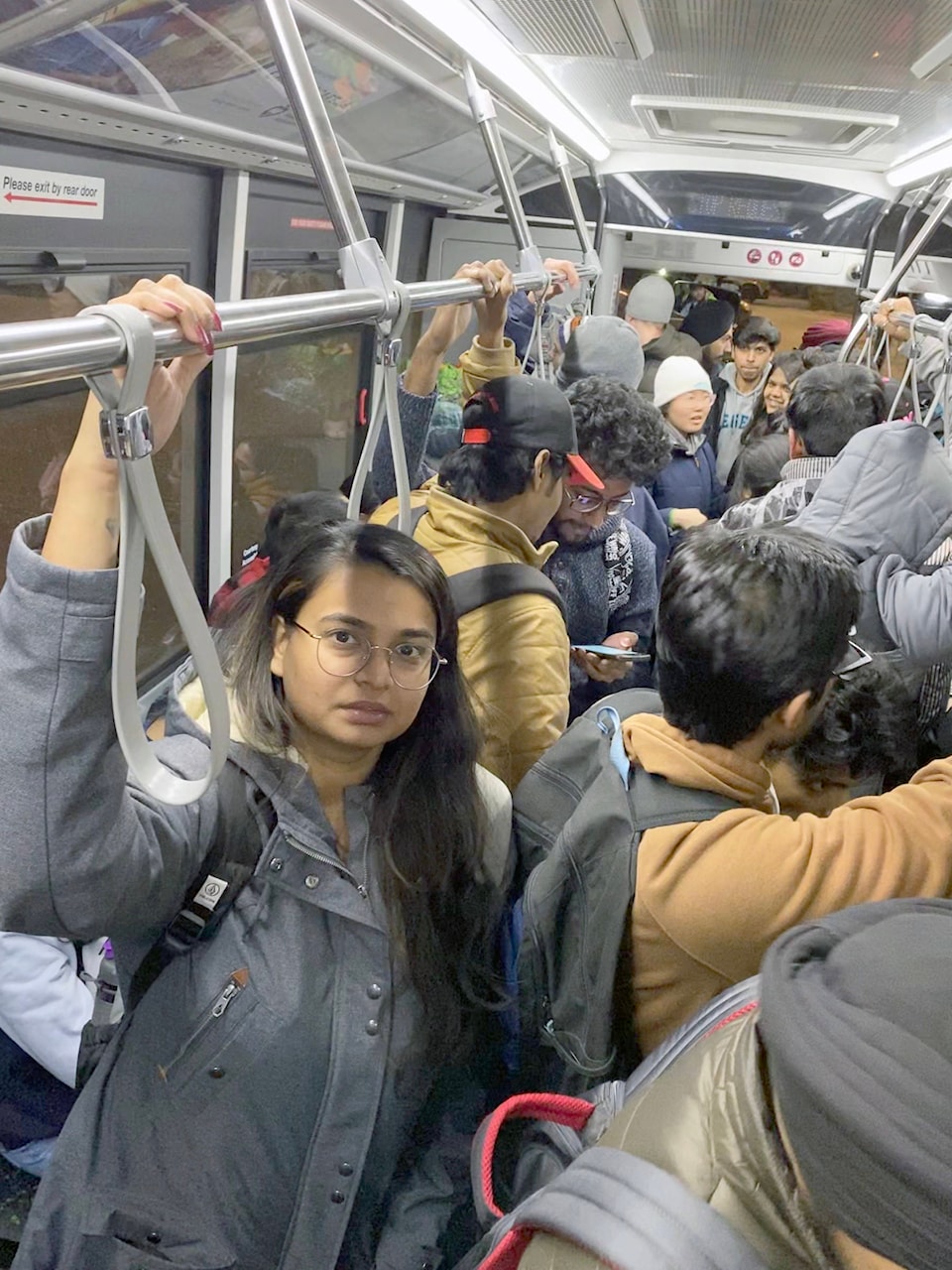Second of two parts
Public transit is essential to many people, it allows them to access to jobs, housing, education, health care, support services and the justice system.
A robust transit system can also help reduce the region’s carbon footprint and lessen environmental impacts.
But all of these benefits are reduced when the system’s supply is not meeting the region’s demand.
“I don’t understand why they just can’t add another route,” is a common sentiment among those frustrated with the current overcrowding in the West Kootenay transit system.
The answer to that question is complex.
On average, for every 100 community members, three will be transit users. One of the main reasons the region is experiencing increased transit demand is the growth of Selkirk College’s international student program. The program now has about 650 students attending, and the school expects those numbers to remain in the 650 to 700 range. Of those international students, almost 100 per cent use transit.
That makes the increase in ridership due to the international student program similar to the area seeing a 21,000-person boost in the general population.
The West Kootenay transit system as it operates now was created in 2012. At that time there were nine different systems. West Kootenay Transit is now made up of three systems — the City of Nelson, Kootenay Lake West, and Kootenay Boundary — that all work together.
Its model of connectivity between cities is fairly unique in the province. But Regional District of Central Kootenay research analyst Tom Dool says this region has always had a tradition of inter-region mobility.
“One hundred years ago all of our communities were connected by rail and sternwheeler,” said Dool. “We’ve never stopped moving from community to community.”
The system requires a co-ordinated effort between 13 municipalities, 14 rural electoral areas, two regional districts, the Ministry of Transportation and Infrastructure and BC Transit. The area spans from Rossland to Argenta and from the Arrow Lakes to Kootenay Lake.
Funding formulas, taxation bylaws, budgets and services must all be co-ordinated for the system to operate smoothly and to grow.
READ PART ONE: Missing the bus — Frustrations rise over crowded West Kootenay buses
RDCK challenges
Before any major transit expansion can take place, the RDCK needs to update its transit-related bylaws.
In August the RDCK delayed approval of a proposed three-year plan put forward by BC Transit because it required budget increases higher than maximums allowed by existing bylaws.
“It is a hard line,” explained Dool. “You can not levy more than a certain amount without going back to the taxpayer through a public process.”
Dool says the district also needs to adjust how funds are apportioned based on current service levels for each area.
The plan is that the RDCK will have public process requirements and all the needed legislative changes in place to be ready to approve a transit plan and get the ball rolling on ordering new buses by the end of June.
If the plan is approved, the region will see three consecutive years of improved transit services. Dool says that means about 25 to 30 per cent growth in transit capacity.
Until a permanent solution arrives, Dool suggests students and commuters consider taking an earlier, less crowded bus.
“If we could get a couple of people to change their mind set and take the earlier bus, our capacity issues could change drastically,” said Dool.
He would also like to see the college consider charging for parking at their campuses and then using those funds to help subsidize public transit.
BC Transit planning process
Another complication to increasing services is that BC Transit funding and planning is done on a multi-year basis, several years in advance.
BC Transit is just wrapping up a regional consultation process looking at how service can be improved in the West Kootenay, but any changes to service are not expected until fall of 2021.
BC Transit planner Adriana McMullen says it takes about a year and a half just to get a new bus.
“Before we order a bus, we have to have all of the local government financial agreements in place,” she explained.
From the consultation process, BC Transit will prepare an expansion plan that sets priorities for improvement for the entire service area.
“Whether the plan proceeds is up to the local governments that fund the service,” said McMullen.
She says that so far the consultation process is showing that people would like service to start on Sundays and weekday nights, along with improved service on the routes that get people to Selkirk College.
McMullen would also like to see an additional park and ride for Castlegar for the route that runs to Trail.
“The Castlegar service is less robust than Nelson, so I think there is an opportunity to bring that up to another level, so it is more closely matched to what we see in other communities in the area,” added McMullen.
Ensuring public transit is available for hospital appointments is a priority for the system as Interior Health subsidizes some routes to ensure access to the regional hospital.
With a solution at least a year and half out, Selkirk College is offering a temporary fix.
The school started funding a shuttle bus during peak student demand times.
“The college felt it had to do something,” said Selkirk College vice president John Kincaid. “It is a student need, so we are having to find the money somewhere.”
Kincaid says the college is open to adding more shuttle services, but running the shuttle is only a temporary fix.
“The long term solution is for BC Transit to modify based on the needs of our students and the community,” said Kincaid.
betsy.kline@castlegarnews.com
Like us on Facebook and follow us on Twitter

